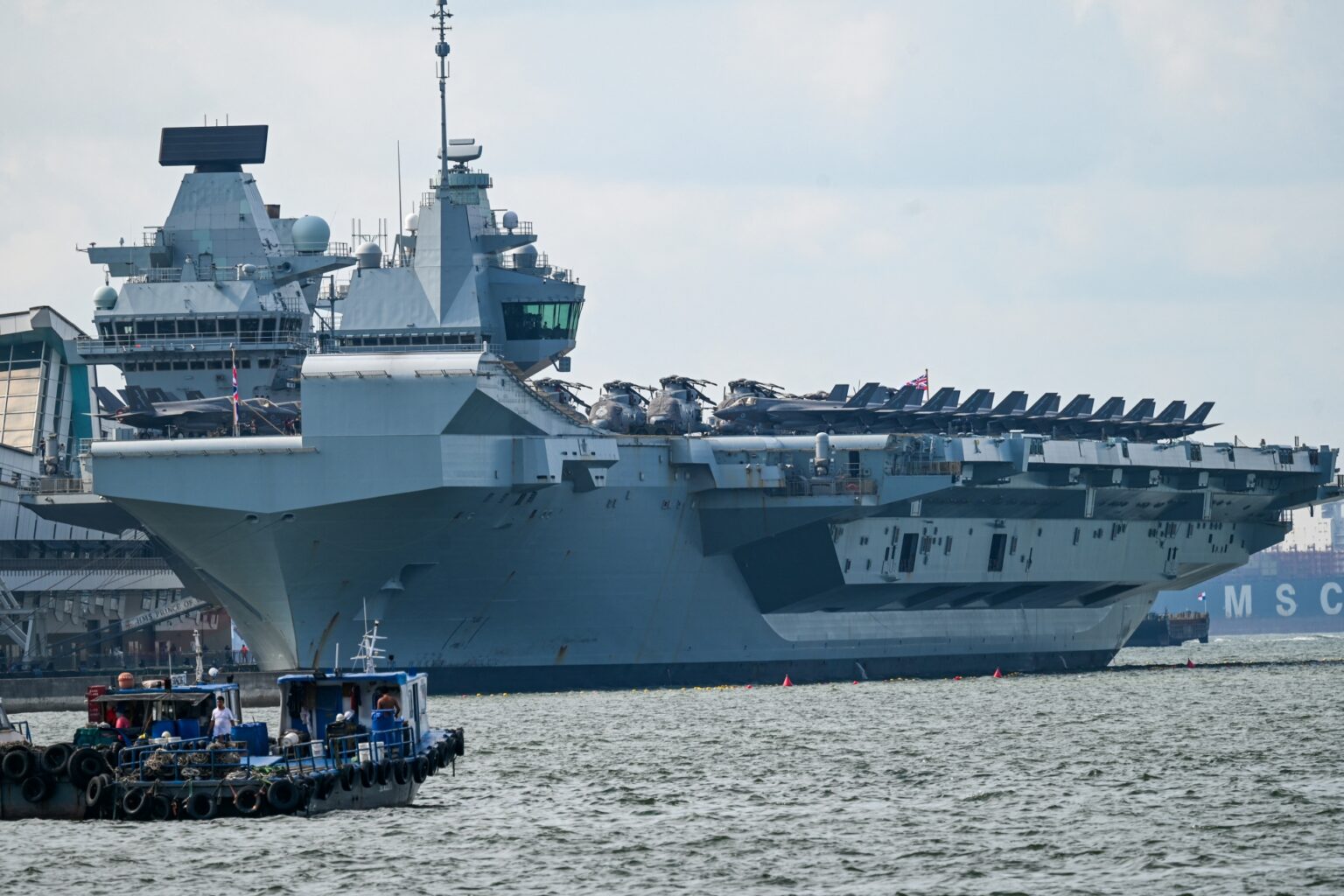The British aircraft carrier HMS Prince of Wales has made its first transit through the contested South China Sea—where China’s claims of sovereignty overlap with those of other nations—after months of operations across the Pacific with allies and partners.
The Chinese Foreign Ministry did not immediately respond to a request for comment.
Why It Matters
The Prince of Wales has been on an eight-month mission, Operation Highmast, since April, deploying across the Mediterranean, Middle East, Southeast Asia, Australia and Japan as part of a pan-European initiative to maintain a naval presence in the Indo-Pacific, where the United States and China are competing for influence and dominance.
The transit of the South China Sea follows the September 12 passage of the Royal Navy frigate HMS Richmond through the Taiwan Strait—a shipping lane claimed by China. The British Defense Ministry defended the voyage, stating that its naval forces exercise freedom of navigation in accordance with international law and norms.
What To Know
“Having transited the South China Sea, it’s great for us to be back in Singapore,” the United Kingdom Carrier Strike Group said on the social media platform X on Saturday. Its arrival in the Southeast Asian island nation was confirmed by ship-tracking data.
This marked the second time the Prince of Wales-led task force has made a port call in Singapore, at the southern tip of the South China Sea, since late June, according to a Newsweek map. At the time, it was en route to Australia after operations near India.
After visiting Australia in late July, the British aircraft carrier operated in the western Pacific and made two stopovers in Japan. In early September, it entered the Sea of Japan—known in the two Koreas as the East Sea—near Russian Far East coastline.
Prior to its transit of the South China Sea, the Prince of Wales deployed its F-35B stealth fighter jets for a trilateral exercise with American and Japanese military aircraft east of Japan’s southwestern island of Okinawa in the Philippine Sea on September 11.
However, it was not immediately clear whether the Chinese military deployed forces to shadow the British aircraft carrier during its transit of the South China Sea.
Meanwhile, China, which operates the world’s largest navy by hull count, has sent its third and most advanced aircraft carrier, CNS Fujian, to the South China Sea near the southern province of Hainan for testing and training after transiting the Taiwan Strait.
What People Are Saying
The Royal Navy said in a press release on September 2: “The carrier now takes her place at the head of the U.K. Carrier Strike Group as the next phase of Operation Highmast begins—taking the multinational group of F-35B jets, helicopters and warships back towards the Suez Canal on its homeward voyage.”
Then British Foreign Secretary David Lammy said in a statement in June: “We will continue to confront China’s dangerous and destabilizing activity in the South China Sea, which I saw for myself when I visited the Philippines.”
Chinese Foreign Ministry Spokesperson Lin Jian said at a press conference in June: “We call on the U.S. and its allies to stop the smears and vilification, stop distorting facts and shifting blames on maritime issues, stop patching together exclusive mini-groups, and stop disrupting the effort of relevant parties to resolve the issues through dialogue and consultation and defend regional peace and stability.”
What Happens Next
It remains unclear when the U.K. or other European countries will next deploy an aircraft carrier to the Pacific as China continues to rapidly expand its military power.
Read the full article here














